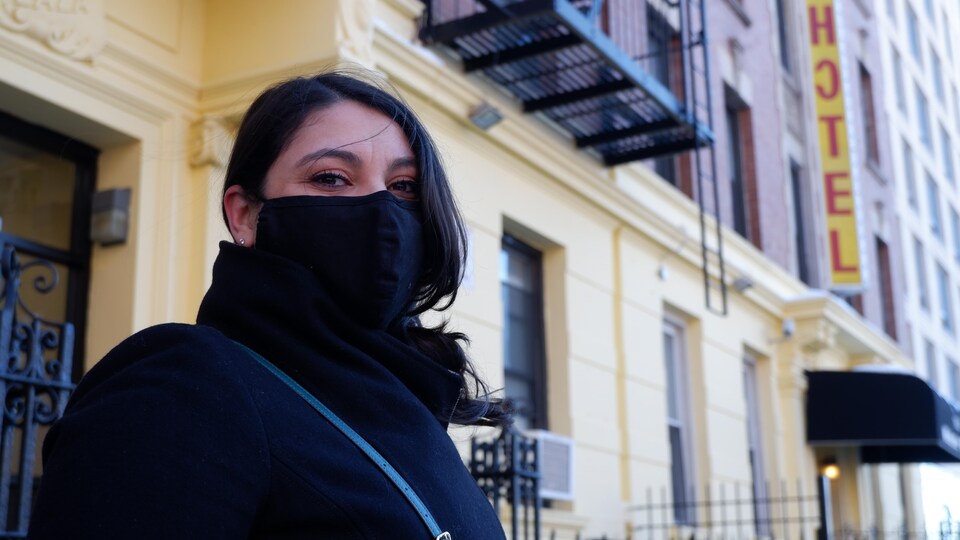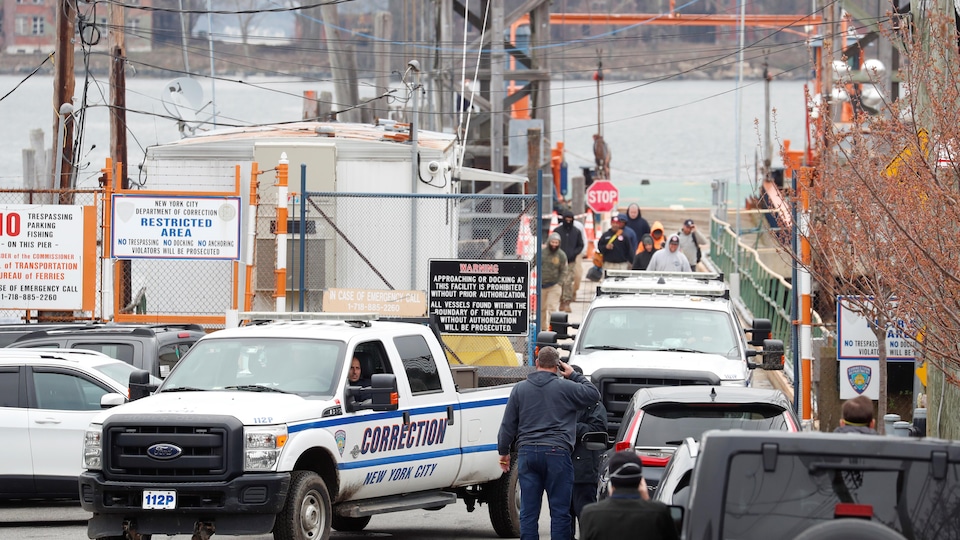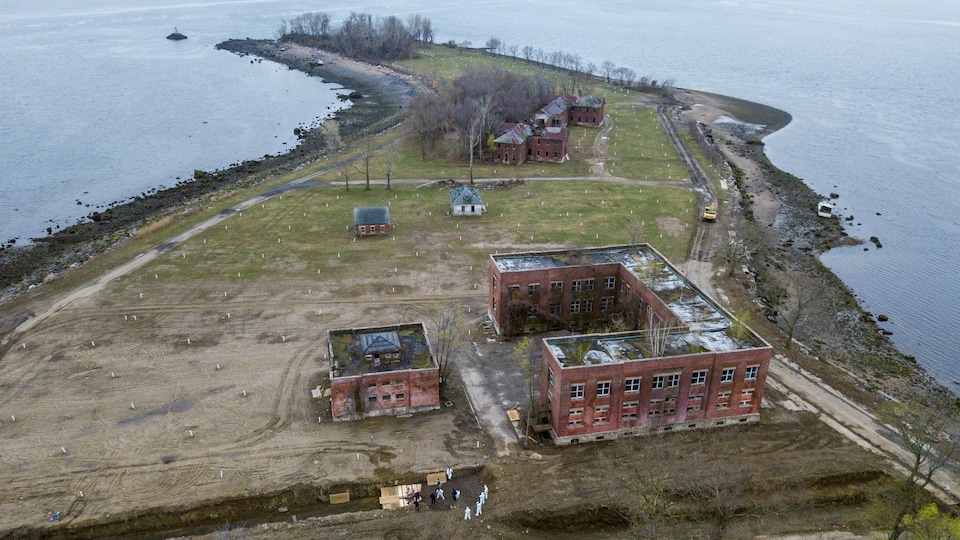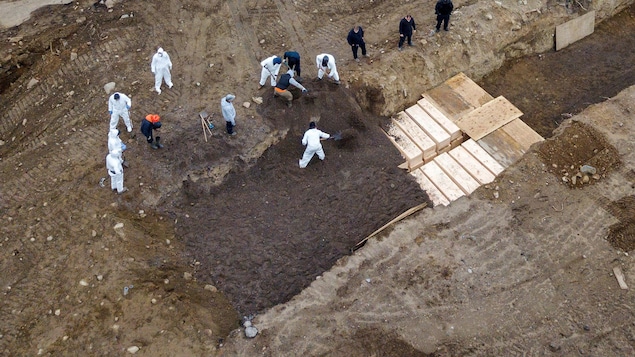If the scene marked the imagination, the practice was nothing unusual. Hart Island, the island off the Bronx, has served as a municipal cemetery for the American metropolis since the end of the Civil War over 150 years ago.
Among the hundreds of thousands of people buried there are victims of major epidemics such as the Spanish flu, but also a large number of disadvantaged New Yorkers or whose families could not take care of the body.
Over a million people have been buried on Hart Island, an island off the Bronx.
Photo: Radio-Canada / Bertrand Guez
—
Roberto Soto, who died of AIDS in the early 1990s, was buried in this mass grave. Hart Island, his name does not appear on any commemorative plaque.
Her daughter Elsie says that when her father died, her family had to make a heartbreaking choice. Unable to pay the exorbitant price charged by funeral homes for people with AIDS, his mother chose to turn his body over to New York City, who buried him in Hart Island.
Due to his illness, he was segregated at the end of his life, quarantined in hospitals and kept away from relatives. And now he’s segregated again.
Elsie Soto regrets that even today, visiting the island to pay homage to her father is a real headache.

Elsie Soto in front of the last building where her father lived in the borough of the Bronx, New York.
Photo: Radio-Canada / Raphaël Bouvier-Auclair
—
Managed by the New York City Department of Prisons, Hart Island is only accessible by boat and it is not possible to go there without having made an appointment.
The few times that she was able to go there, Elsie Soto was confronted with an unwelcoming decor, consisting in particular of ruined buildings sometimes dating from the 19th century. And until the start of the pandemic, inmates at Rikers New York Prison were responsible for burying the bodies there.
It affects the grieving process that someone normally goes through when they lose a loved one
, says Elsie Soto, recalling in addition that mesh doors block access to the wharf which allows to reach the island.

Access to Hart Island is managed by the New York City Department of Prisons.
Photo : Reuters / Lucas Jackson
—
From mass grave to place of commemoration?
The dismal decor that welcomes the relatives of those buried in Hart Island could change.
Last summer, a plan was presented to New York City Council to make the island a memorial site for the approximately 25,000 confirmed victims of COVID-19 who resided in the city.
It shouldn’t be just for COVID-19 victims
, however, launches Melinda Hunt, head of Hart Island project, an organization that collects information on people buried on the island and tries to facilitate access to the mass grave where their loved one was buried.

Melinda Hunt is the head of the Hart Island Project which attempts to trace the history of those buried on the island.
Photo: Radio-Canada / Raphaël Bouvier-Auclair
—
According to her, a monument, even a national park, should pay homage to all the people who are buried in these mass graves and who, in their own way, have contributed to the development of the largest city in the United States.
The purpose of a cemetery is to know our history and to remember the people who came before us. But in New York, a city that is so big and dense, this island has become the symbol of those who have fallen through the cracks.
Whether or not the island becomes a place of commemoration, the relatives of people who rest there have already won a first victory.
From the month of July, the responsibility of Hart Island will be transferred from the department which manages the prisons to the one responsible for the parks. A change that could have an impact on the appearance of the place and its access.

An aerial view of Hart Island in Spring 2020.
Photo : Reuters / Lucas Jackson
—
Like many people who couldn’t say a final goodbye to loved ones during the COVID-19 pandemic, I couldn’t say goodbye to my father during the AIDS crisis
, explains Elsie Soto.
For her, the creation of a monument, or any measure that would give the air of a real cemetery to Hart Island, would be something important for families who would like to mourn
.
–


